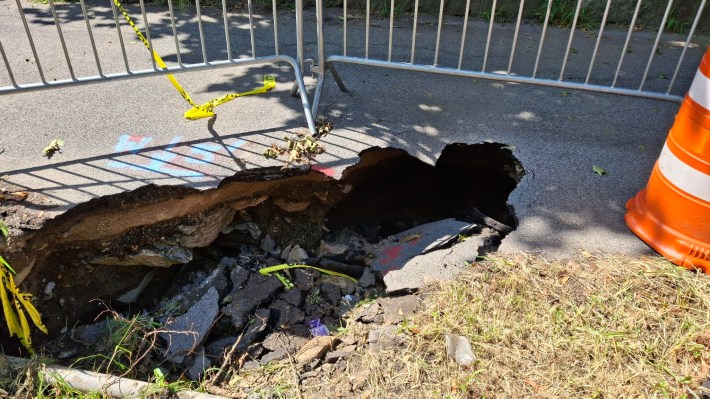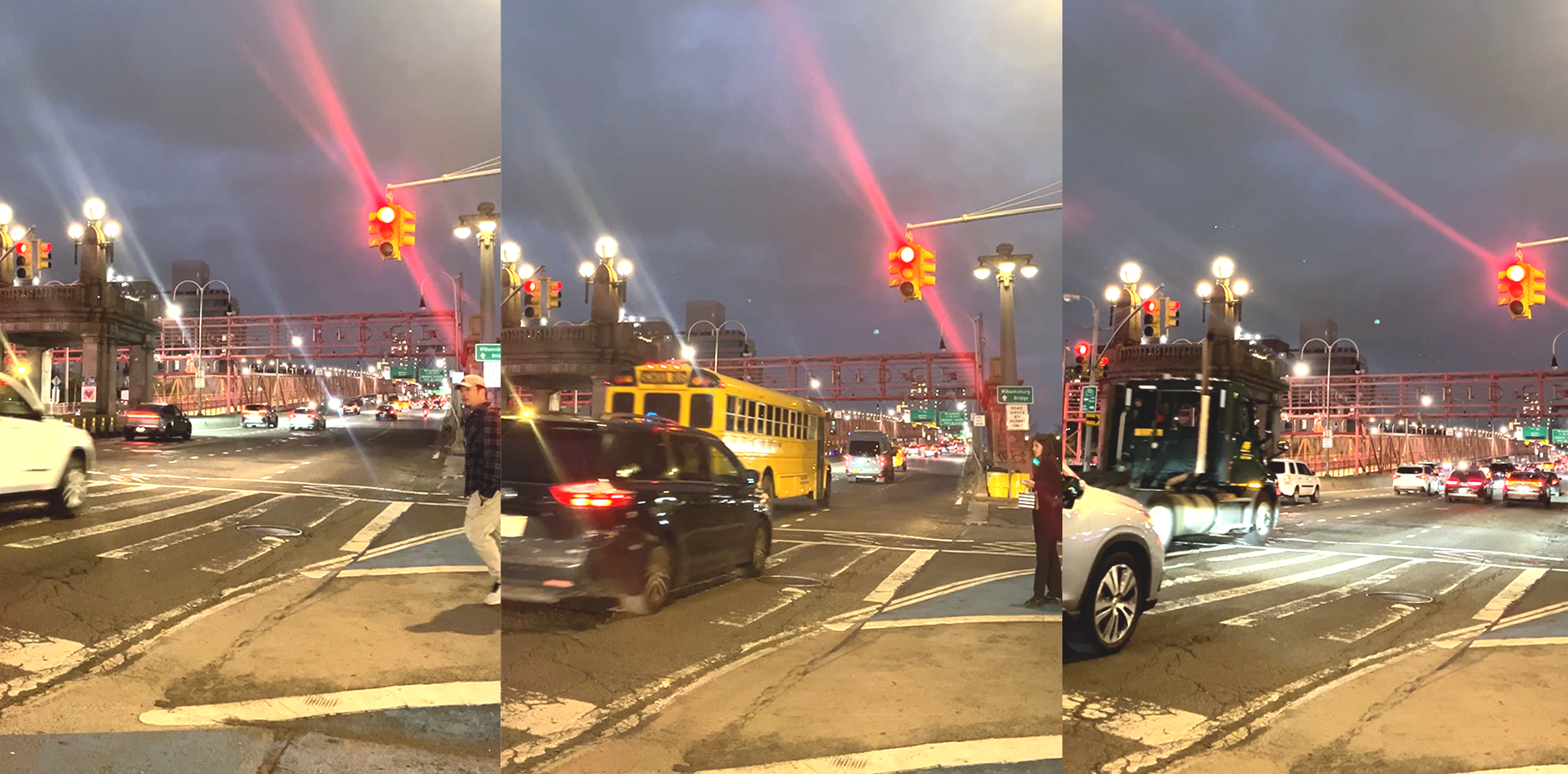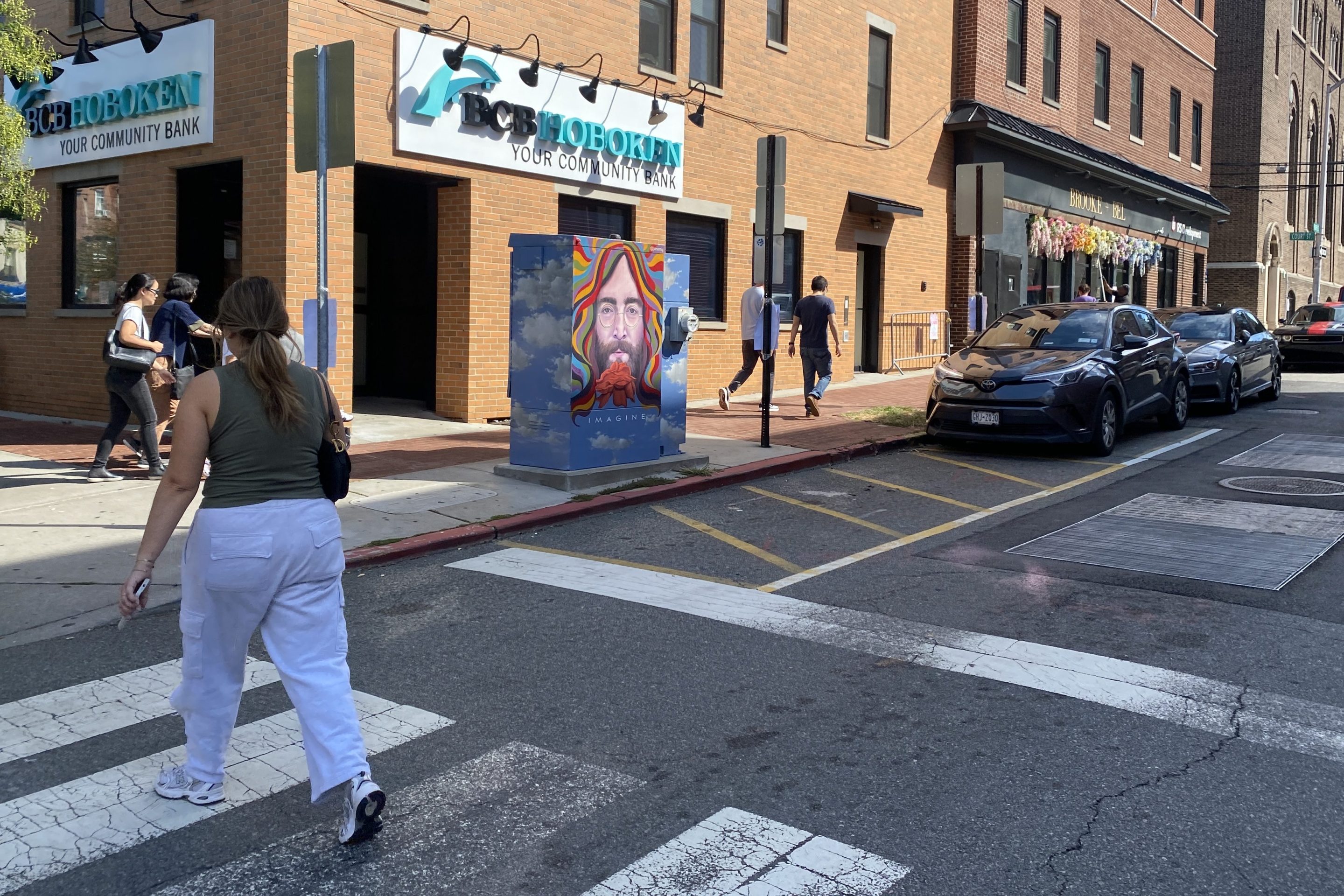Greenway? No way!
The Hudson River Greenway will remain closed between Dyckman and 181st streets in upper Manhattan for another month — and residents are begging the Parks Department to heed their calls for a safe detour.
The sinkhole appeared in late April along the same stretch that has been closed three times in the past two years. The Parks Department initially said it would be fixed in the spring, but now that stretch isn’t expected to open back up until "late June," the Parks Department now says. Construction along the greenway, where the department is addressing other sinkholes and structural issues, is set to be completed at the beginning of July.
But the issues with the Greenway reveal a pattern of inaction by the administration that is now forcing cyclists onto unsafe routes. Now, instead of riding on a protected, car-free route along the river, cyclists are detoured onto Broadway, which has no protected cycling infrastructure.
“That’s not a detour, it goes to a different place, up a whole bunch of hills, it's a different route,” Dave Thom, one of the principal organizers of the Inwood Owners Coalition. "It doesn't start in the same spot, it doesn’t end in the same spot, and it involves a completely different set of circumstances."

In March, Parks initiated a 12-month Capital Project Scoping Development study to explore engineering fixes to eliminate future sinkholes, according to a Parks representative.
The Department said that investigations will be underway this summer as a part of the scoping project and there will be community engagement starting in the summer and fall.
But advocates and greenway users want to see a safe alternate route, now.
Thom and his coalition have suggested turning a lane of the nearby Henry Hudson Parkway into a two-way protected bike lane, which the department shot down. But he is still hopeful that Park’s will consider this route, especially if the greenway ends up needing more structural repairs.
“There’s an alternative ready to be implemented that would solve many of these problems,” he said.
And others saw hope in the "Little Red Lighthouse route," which would turn an existing waterfront path into another bike lane connecting to the famed lighthouse under the George Washington Bridge. The Parks Department applied for federal funding to study this route, but lost, according to the Greenway Alliance.
For those who use the greenway as a transportation route, the closure remains frustrating.
“It’s not rocket science: If we want this to be an actual route that people use to go from point A to point B, we have to treat it like it’s a transportation network, and if it is a transportation network, maintenance has to be part of it,” said Allegra LeGrande an Inwood resident who uses the greenway to commute to work and ride with her children.
The persistent greenway closures — and lack of a safe detour — is part of a pattern. The Parks Department controls the city’s greenways and intra-park bike paths, but sees them as space for recreation rather than as a vital part of a transportation network. And this affects the most-vulnerable.
“During Covid, both of my kids went to school near my office. And we would bike, from Inwood, even though they were ten and eleven years old because we had the greenway. And we weren’t the only ones,” said LeGrande. “Now there’s been an implicit but conscientious decision to take bikes away as a viable transportation method. And this is more likely to impact the decisions of women riding, than it is to impact men riding.”






